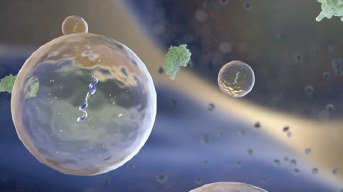Success in targeted delivery of therapeutics often relies on formulation. The ability to get biomolecules to where they are needed and taken in by the correct cell types requires strategic design. One technology currently drawing interest among pharmaceutical scientists is the use of exosomes as a transporter of therapeutics.
Exosomes are membrane vesicles released into the extracellular environment following exocytic fusion of multivesicular endosomes with the cell surface membrane. They have a particular composition reflecting their origin in endosomes as intraluminal vesicles. These lipid bilayers have embedded ligands and receptors that are otherwise difficult to manufacture. Currently there is much interest in how to isolate and purify exosomes from biological fluids and from cell culture.
Exosomes were first described in the 1980s in the process of immature red blood cells maturing into erythrocytes. However, the true excitement did not arise until Graca Raposo and colleagues at the University of Utrecht published an article entitled “B lymphocytes secrete antigen-presenting vesicles” in 1996 in the Journal of Experimental Medicine. Since then, the number of research articles describing exosomes to be used for drug and nucleic acid delivery and in anti-cancer vaccines has exploded.
We refer the interested reader to a recent review article by Sahil Inamdar and colleagues from Arizona State University entitled, “Emerging applications of exosomes in cancer therapeutics and diagnostics.” Bioeng Transl Med. 2017 Mar; 2(1):70-80. doi: 10.1002/btm2.10059. Epub 2017 Apr 3. Click to read the article
Chamow & Associates helps biotechnology companies to prepare biotherapeutics for clinical testing.





